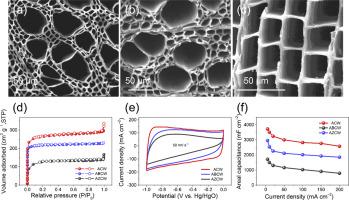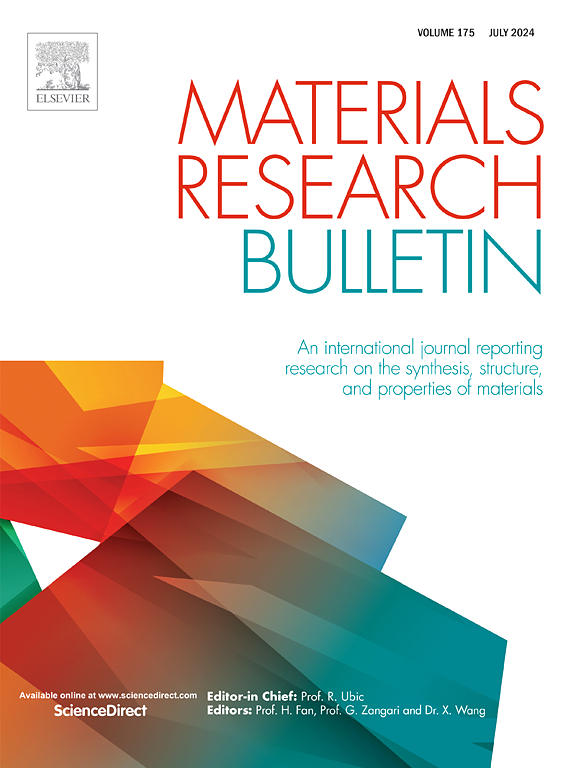Effects of tree species pore structure characteristics and CO2 activation on the performance of their derived carbon electrode for supercapacitors
IF 5.3
3区 材料科学
Q2 MATERIALS SCIENCE, MULTIDISCIPLINARY
引用次数: 0
Abstract
Herein, we investigated the effects of tree species selection on the specific surface area and electrochemical properties of wood-derived carbon electrodes. The SEM, Raman spectra and aperture distribution test results showed that compared with BCW and ZCW, CW had a more complex hierarchical porous structure and more defects. The N2 adsorption/desorption isotherms and electrochemical test results showed that CW had the largest specific surface area and the best electrochemical performance, with a specific surface area of 495.3 m2 g−1 and an areal capacitance of 3079 mF cm−2 at 5 mA cm−2. The specific surface area and electrochemical properties of ACW, ABCW and AZCW electrodes obtained by CO2 activation were significantly improved compared with CW, BCW and ZCW electrodes. Among the activated electrodes, the ACW electrode had the highest specific surface area (558.4 m2 g−1) and the highest areal capacitance (3727 mF cm−2 at 5 mA cm−2).

树种孔隙结构特征和二氧化碳活化对超级电容器用衍生碳电极性能的影响
在此,我们研究了树种选择对木质碳电极比表面积和电化学性能的影响。扫描电镜、拉曼光谱和孔径分布测试结果表明,与 BCW 和 ZCW 相比,CW 具有更复杂的分层多孔结构和更多缺陷。N2 吸附/解吸等温线和电化学测试结果表明,CW 的比表面积最大,电化学性能最好,比表面积为 495.3 m2 g-1,在 5 mA cm-2 时的等效电容为 3079 mF cm-2。与 CW、BCW 和 ZCW 电极相比,通过二氧化碳活化获得的 ACW、ABCW 和 AZCW 电极的比表面积和电化学性能都有显著提高。在活化电极中,ACW 电极的比表面积最大(558.4 m2 g-1),电容值最高(5 mA cm-2 时为 3727 mF cm-2)。
本文章由计算机程序翻译,如有差异,请以英文原文为准。
求助全文
约1分钟内获得全文
求助全文
来源期刊

Materials Research Bulletin
工程技术-材料科学:综合
CiteScore
9.80
自引率
5.60%
发文量
372
审稿时长
42 days
期刊介绍:
Materials Research Bulletin is an international journal reporting high-impact research on processing-structure-property relationships in functional materials and nanomaterials with interesting electronic, magnetic, optical, thermal, mechanical or catalytic properties. Papers purely on thermodynamics or theoretical calculations (e.g., density functional theory) do not fall within the scope of the journal unless they also demonstrate a clear link to physical properties. Topics covered include functional materials (e.g., dielectrics, pyroelectrics, piezoelectrics, ferroelectrics, relaxors, thermoelectrics, etc.); electrochemistry and solid-state ionics (e.g., photovoltaics, batteries, sensors, and fuel cells); nanomaterials, graphene, and nanocomposites; luminescence and photocatalysis; crystal-structure and defect-structure analysis; novel electronics; non-crystalline solids; flexible electronics; protein-material interactions; and polymeric ion-exchange membranes.
 求助内容:
求助内容: 应助结果提醒方式:
应助结果提醒方式:


